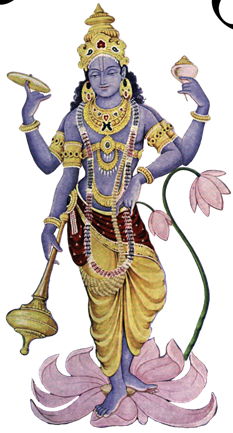I. Vaiṣṇava Environmental Activism
by Dayānanda dāsa
Vaiṣṇava environmental activism is not just an aspect of Kṛṣṇa consciousness. It casts a wide net and is essential for recruiting large numbers to Mahāprabhu’s movement.
People who join an activist group are eager to do something. It is active, on the street. For example, people block traffic by sitting in front of the cars, and they glue themselves to fixtures so they can’t be moved. They are often willing to be arrested, all indicating a high level of commitment.
When devotees hear the word environment in connection to varṇāśrama, they often categorize it with social problems like crime, human trafficking, corrupt government, failed economy, food shortages, and other issues. They say that discussion of the environment is only one aspect of varṇāśrama no more important than any other.
However, that is not true. Those are all socio-political concerns. Environmental solutions are cultural, which may be directly solved by daiva-varṇāśrama culture.
To see how effective a preaching vehicle might be, one should (1) evaluate the level of passion and commitment around each one, and (2) see how well daiva-varṇāśrama addresses it.
The first four social problems listed above (crime, etc.) do not generate a very strong or long-term level of passion, and our implementation of varṇāśrama does not address them very well. Number five, food shortage, is under the category of the environment.
And all five are temporary. In general, they will come and go depending on the socio-political climate. Environmental degradation is here to stay, and it will cause many other problems.
The U.S. and other wealthy countries have a history of correcting serious social and governmental problems like crime, economy, etc. But the major weakness of all countries, wealthy and poor, is environmental exploitation. That is built into the fabric of America and the other wealthy countries. Thus, it cannot be solved without cultural change. Moreover, it is a problem that will last for generations.
Here are a few inspiring numbers. They show how many people are friendly, supportive, and in many cases, willing to sacrifice for an activist cause:
Fridays for Future or School Strike for Climate: In 2019, one million strikers in 2,200 strikes were organized in 125 countries.
Just Stop Oil: 2,300 arrests with 138 people spending jail time.
Extinction Rebellion: Since 2018, they have recruited 250,000 people in 1,000 groups in 75 nations. (They are the people who sit in front of cars, of course not all 250K.)
Earth Day: Established in 1970 for environmental protection, huge numbers take part in functions in 192 countries.
Green Parties: Starting around 1972, these are left-leaning political parties now in 90 countries.
Greenpeace: Founded in 1971, they claim 3.5 million members in 55 countries.
Quite a lot of popular sentiment supports the groups listed here, but they have weak ideologies. There is not one significant group in the world that has proven solutions. They all depend on the promises of left-wing political ideology and unproven technologies.
Varṇāśrama, meaning natural village life, is a proven solution. Just 50-80 years ago, the villages of South Asia, which were roughly based on varṇāśrama, were models of harmony with nature—proof that varṇāśrama culture solves environmental issues.
It is sad news that Extinction Rebellion got 250,000 people in five years, or School Strike for Climate has one million followers. Daiva-varṇāśrama should have those people. And indeed, with a little effort, daiva-varṇāśrama can have that many.
It begins with faith in this type of preaching. The next step is to implement it widely.
